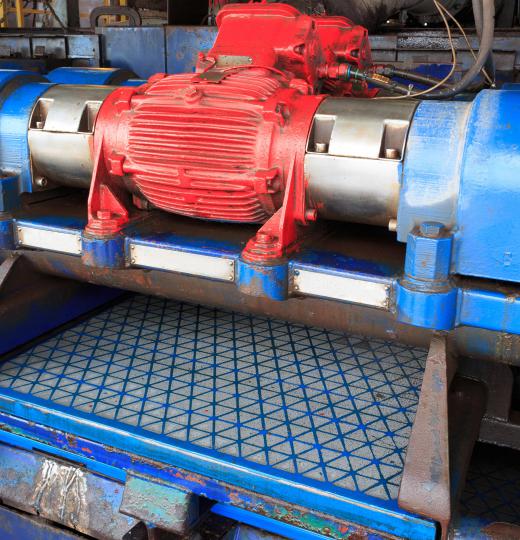Mud weight is a quantitative term used to express the density of drilling fluids used in the sinking of wells, particularly in the crude oil exploration and extraction industry. The mud weight of a drilling fluid is generally expressed in pounds per gallon (ppg), although several other units of measure are used, including kilograms per cubic meter (kg/m3). Drilling fluids are used to cool drill bits, to remove drill cuttings from the wellbore, and to prevent casing collapse. A mud scale, which consists of a leveled slide scale, is generally used to determine mud weight.
Considering the rugged environment that generally surrounds well drilling, the process is an intricate and delicate one. Drill bits work at great depths and are subjected to extreme conditions, as are the other components involved in the process. One of the elements employed to reduce the strain placed on these components is the drilling fluid within which the drill bit works. These muds, as they are commonly known, cool the bit, and aid in the removal of drill cuttings. They also suspend the cuttings during pauses in the drilling process and control hydrostatic pressure within the well.

Various mediums are used as drill muds, including water, oil, and gas-based fluids. The type of drilling mud used on any particular drill site is carefully formulated to suit the specific ambient conditions with different wells, seldom utilizing the same mud mix. One of the most important variables when formulating drilling fluid mixes is mud weight or the density of the fluid. Incorrect mud weight values may cause several serious problems, such as circulation losses. The density of these fluids is controlled by the addition of barite or, less commonly, halite and calcium carbonate.
A specially-designed slide scale known as a mud balance is used to calculate the mud weight of drilling fluids. This instrument consists of a slider balance beam equipped with a bubble-type leveling system. A sealed container is attached to the one end of the beam into which the drilling fluid sample is placed. The slider is then moved along the bar to establish the fluid density.
Mud weight values are usually expressed in pounds per gallon or ppg. Other units are used though, which include kilograms per cubic meter (kg/m3) and grams per cubic centimeter (g/cm3). The weighing and test procedures used to measure mud weight values are laid out in a set of globally-recognized standards published by the American Petroleum Institute.
